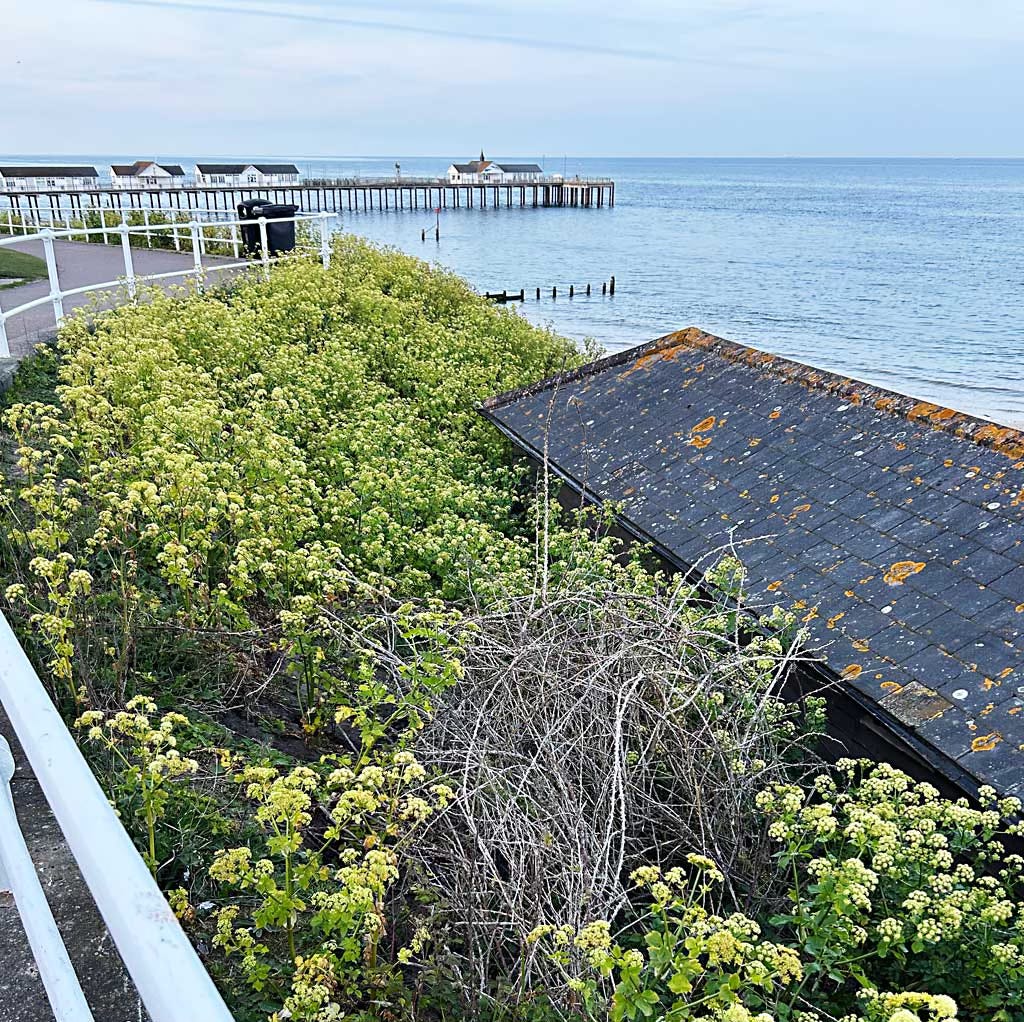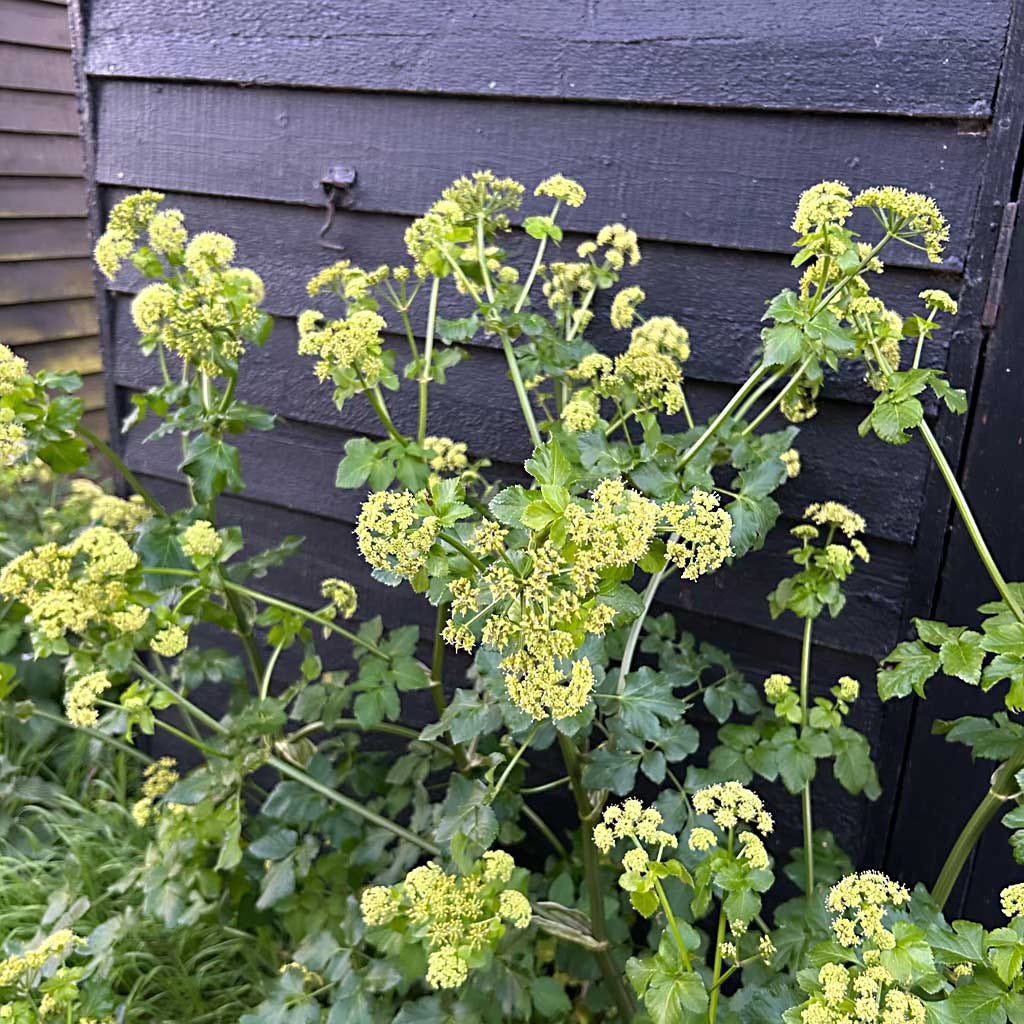
I wouldn’t be the first person to plant something in the garden that reminded me of a favourite holiday spot. But would it, I wonder, diminish my enjoyment of the sight of it in its more usual, if not quite its native1, location? Familiarity breeding contempt, and all that, though ‘contempt’ feels a bit strong. Apathy might be a greater risk, but then, could a person ever be apathetic about Smyrnium perfoliatum, aka Alexanders – and not just because it’s a plant with not one, but two, splendid names?
Whenever we get away to the Norfolk or Suffolk coast, we can be sure of being welcomed by great pillowy chartreuse clouds of the stuff in flower – the same kind of zingy yellow-lime hue that euphorbias introduce to the border in spring, picked up some weeks later by Alchemilla mollis. This entirely edible relative of cow parsley (with its culinary correlation to celery) flowers at around the same time as its frothy white cousin and is just as reliably biennial, but is rarely found out and about in our part of Kent. It would need a firm hand – Kew Gardens found that cutting it back before it had a chance to go to seed prevented it from swamping the bluebells – but I’m a sucker for that colour, and am sure I could enjoy it anywhere.

What have the Romans ever done for us? Introduced Alexanders to these islands, apparently, bringing it with them – along with rabbits and lettuce and viaducts (that must have been quite the journey) – from its home in the Med.





I love Alexanders' limeade wash too - it's all along the coastline here in south Devon and set against the red cliffs, especially striking
They are everywhere in my part of Kent, Andrew. They are clouding the beach at Walmer and Deal with their limey froth. And at the White Cliffs of Dover trails, which I've been writing about. I love them so much!
Franny